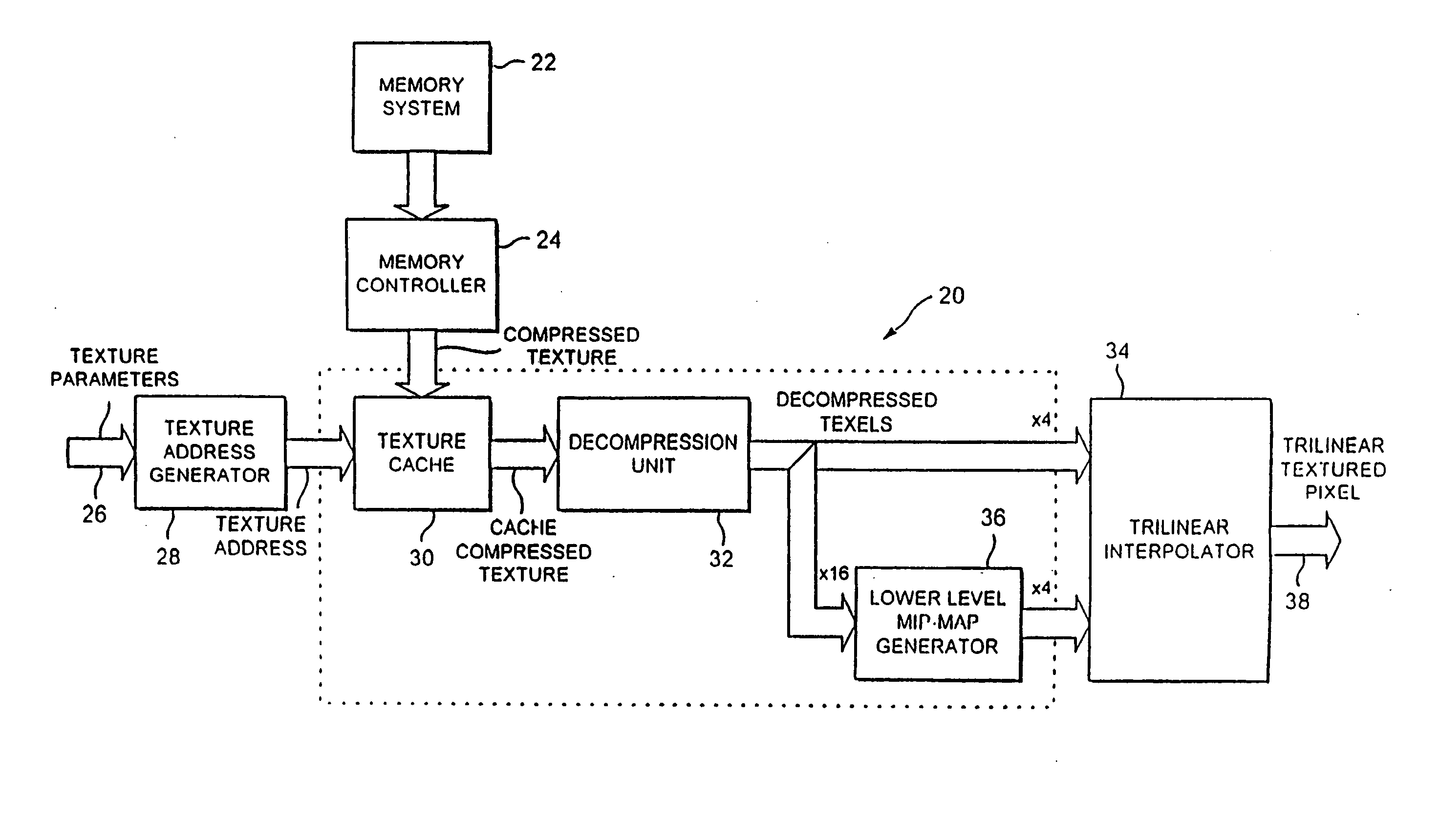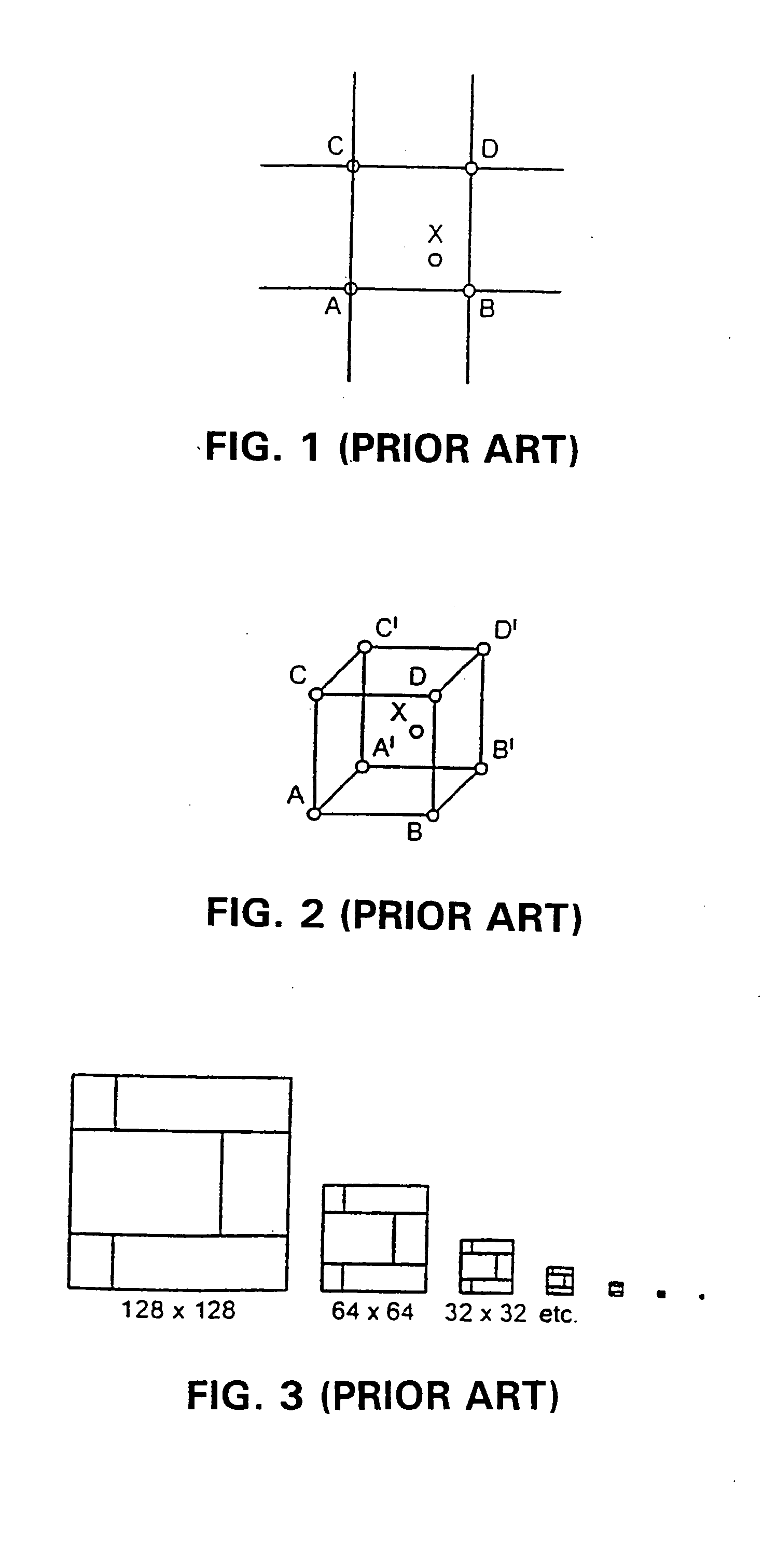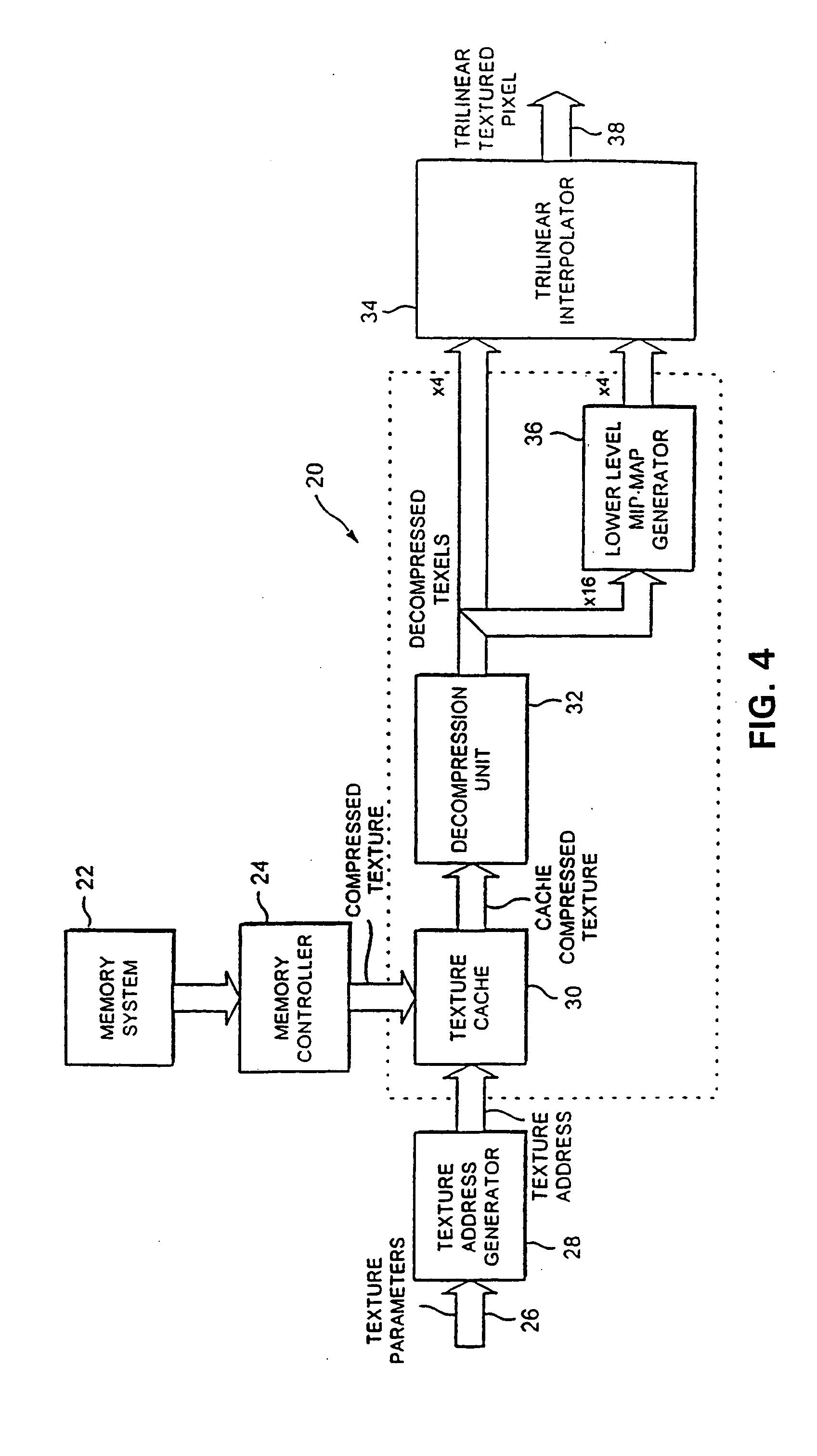Texturing systems for use in three-dimensional imaging systems
a technology of three-dimensional imaging and texture, applied in the direction of image data processing, cathode-ray tube indicators, filling the planer surface with attributes, etc., can solve the problems of limiting performance, accessing stored databases, and increasing processing power for animated 3d images for games and computer aided design applications
- Summary
- Abstract
- Description
- Claims
- Application Information
AI Technical Summary
Benefits of technology
Problems solved by technology
Method used
Image
Examples
Embodiment Construction
FIG. 4 shows a specific embodiment of a texturing system in accordance with the invention. The texturing system 20 comprises a memory system 22 forming part of the memory used by the imaging system as a whole, and which is controlled in known manner by a memory controller 24. The memory 22 holds inter alia a compressed texture map, and the output of the memory through the memory controller 24 consists of compressed texture from the requested part of the texture map. Parameters defining the texture required for any surface are received at an input 26 and applied to a texture address generator 28 to address the part of the memory 22 where the desired texture is located. The compressed texture is retrieved from memory by the memory controller 24 and held in a texture cache 30. The retrieved texture will correspond to a particular texture type representing the type of surface to be displayed. For example this may be part of a brick wall or the surface of a road. This surface texture wil...
PUM
 Login to View More
Login to View More Abstract
Description
Claims
Application Information
 Login to View More
Login to View More - R&D
- Intellectual Property
- Life Sciences
- Materials
- Tech Scout
- Unparalleled Data Quality
- Higher Quality Content
- 60% Fewer Hallucinations
Browse by: Latest US Patents, China's latest patents, Technical Efficacy Thesaurus, Application Domain, Technology Topic, Popular Technical Reports.
© 2025 PatSnap. All rights reserved.Legal|Privacy policy|Modern Slavery Act Transparency Statement|Sitemap|About US| Contact US: help@patsnap.com



